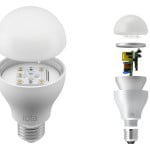Knee high by the Fourth of July. That’s what corn should be, knee high. Not the rainfall — corn. But by the first week in July our crop had just poked its water-soaked little heads out of the ground and cried out, “Save us, we’re drowning.”
Although corn isn’t our only veggie, it’s the one by which Bob measures all others. If the corn is happy, he’s happy.
It is no accident that growing a garden is referred to as “raising” vegetables. From the moment Bob plants the first fragile seeds until the crops are in, my husband nurtures them until they can stand on their own. Like raising children, he waters them when they’re thirsty, feeds them nutrients when they look pale, covers them when they are too cold, and until harvested, keeps them out of harm’s way.
Four years ago, when I bought Bob a rototiller from a young man who was selling his land and had no use for the tiller, I was excited at the prospect of growing our own, chemical free, fresh veggies. But I should have known better. After 55 years of marriage I should have foreseen that my husband does nothing halfway. When he skis, he goes 70 times a winter. When it’s fishing season, he heads for the stream before the fish take their first swim of the day. When he hunts, he’ll sit in a tree stand until the hunting regulations say, “Go home.” And being a retired carpenter who can’t quite lay down his hammer, we now have a garden shed, a woodshed, a sauna, an attached storage room behind our garage, a play house (the kids have outgrown), and the green building (we’ve run out of names) that stores whatever he can’t live without and doesn’t fit into the rest of the out buildings.
So, I shouldn’t be surprised that in the past four years our garden area has doubled. We not only have two vegetable gardens, we have several raised asparagus beds, rhubarb beds, grape vines, and the apple trees that at last count stood at 10.
Since we have two gardens, we have two tillers: the original large one and a baby one to keep the big one company. We have acquired a large container to hold water (just in case it ever stops raining) and several hundred feet of hoses to run water from the house in order to fill the tank. And because this is no longer a small operation, the garden shed was constructed to store the tillers, the hoses, the multitude of hand tools that stock each garden, and the never-ending supply of bags filled with compost and other plant food Bob hauls out to the garden on his four-wheeler.
But of all the garden occupants, the one that takes up the most space is the crop that is most vulnerable even though it towers over the others—the almighty corn patch. For not only is this crop loved by humans, it appears to be on the attack list of several animals. Deer, raccoons, turkeys and yes, even the lovable gray squirrels, (the most destructive of them all) have developed a taste for corn.
Even though our corn patch is guarded with traps for the raccoons, and is surrounded by an electric fence with chicken wire running from the ground up to the first wire, like a giant chastity belt, to keep out intruders, our patch is still ravished day and night. Even though Bob patrols the corn with shotgun slung over his shoulder, like Elmer Fudd looking for the wascally wabbit, the varmints manage to run in and out of the garden ripping down stalks, challenging us to catch them if we can. Out of 200 plus ears of corn last season, we salvaged six…SIX. The critters ate or destroyed the rest.
I’m tired, they won. I’ve mixed feelings about visiting the Corn Man; it’s almost like cheating on my husband. But a woman has to do what she has to do. So, if you see me waiting in line, don’t tell Bob. I’ll convince him the corn is his.
[Source”cnbc”]











